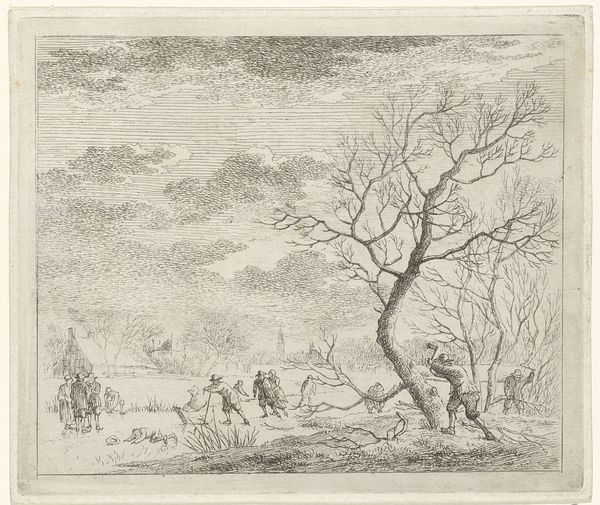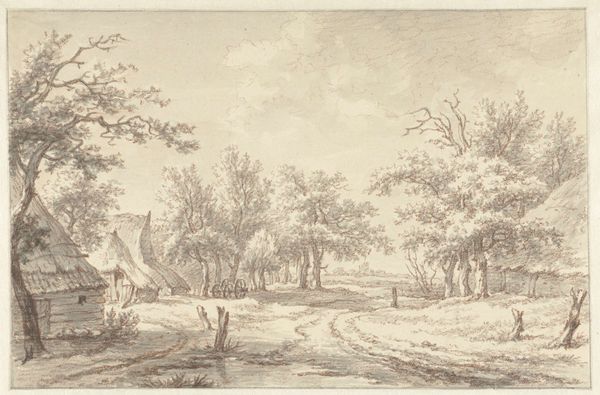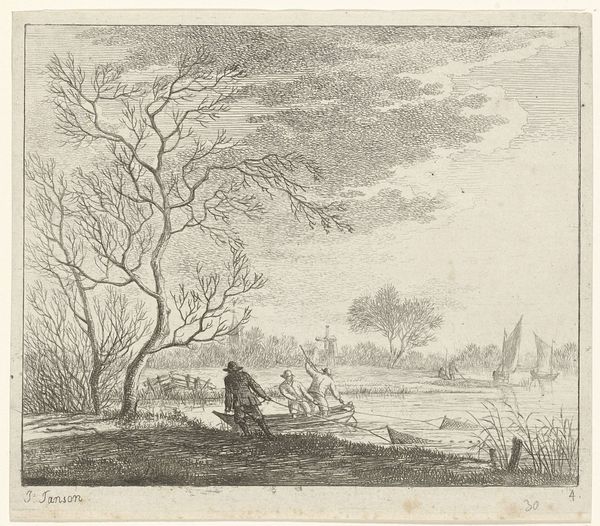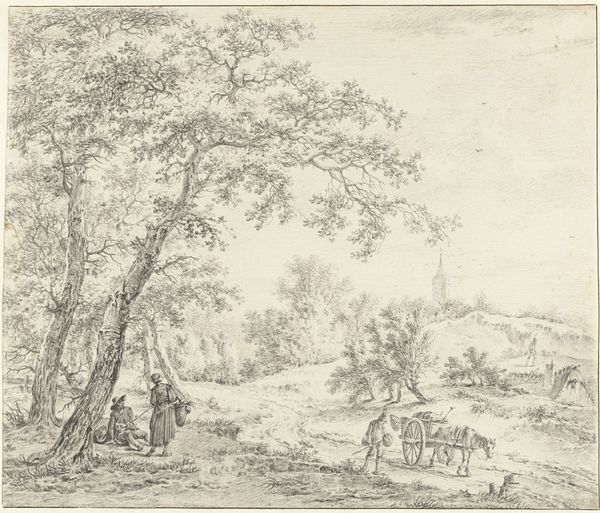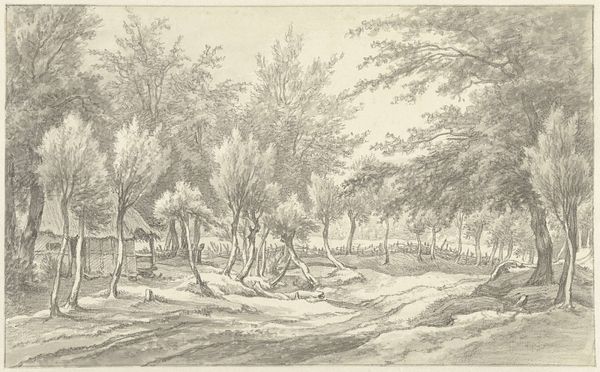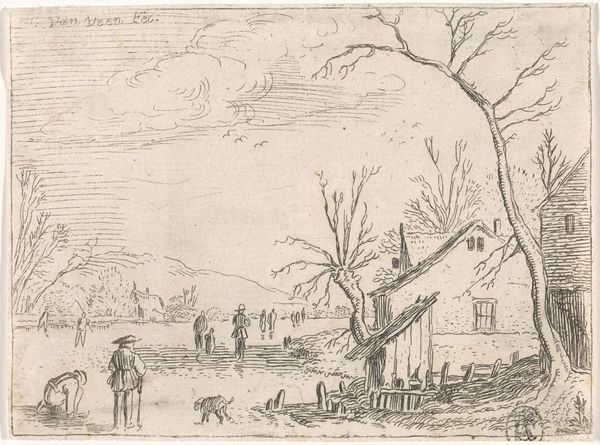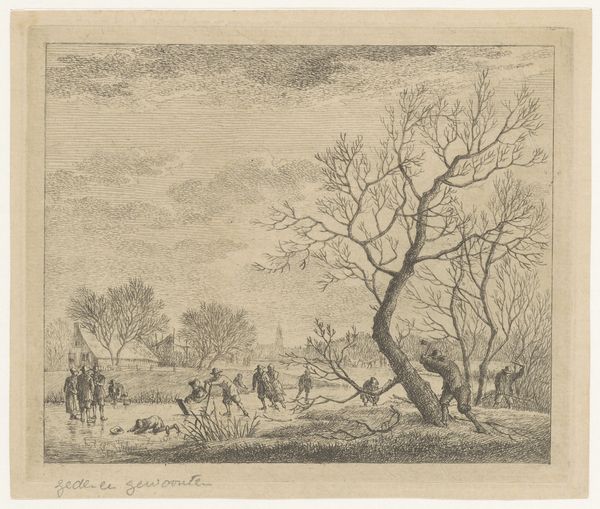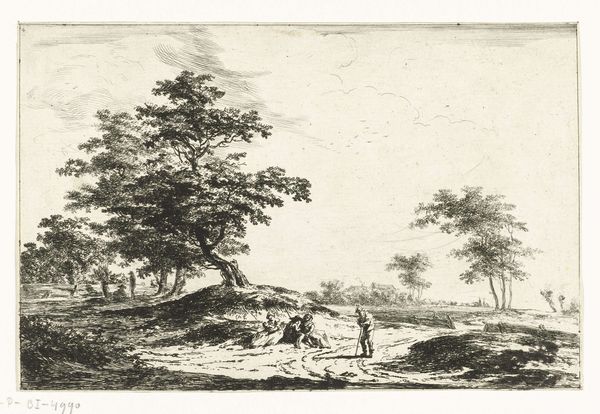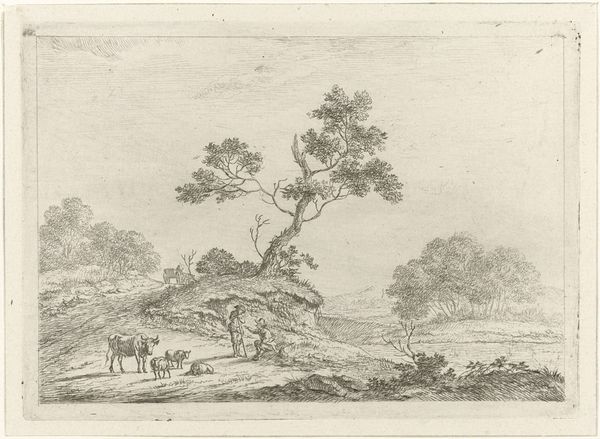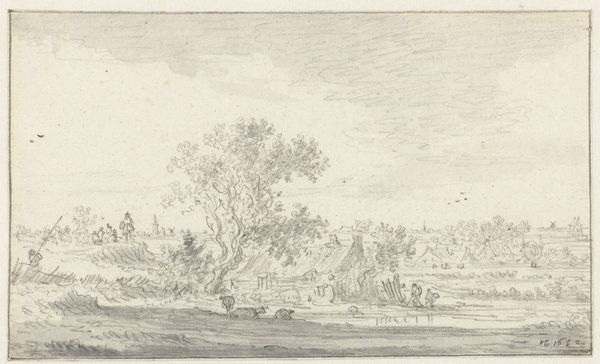
drawing, engraving
#
landscape illustration sketch
#
drawing
#
light pencil work
#
dutch-golden-age
#
pen illustration
#
pen sketch
#
pencil sketch
#
old engraving style
#
landscape
#
personal sketchbook
#
pen-ink sketch
#
line
#
pen work
#
sketchbook drawing
#
engraving
#
realism
Dimensions: height 147 mm, width 169 mm
Copyright: Rijks Museum: Open Domain
Editor: This is Johannes Janson’s "Landschap met boerderij en akker" from 1783, housed in the Rijksmuseum. It's an engraving, and I find it quite bleak. The figures seem burdened, almost stooped under the weight of something… What strikes you about it? Curator: The bleakness you observe resonates deeply. Consider the historical context: 1783. This was a period rife with social stratification and the crushing realities of agrarian life for the majority. Janson wasn't merely depicting a landscape; he was capturing the economic precarity and arduous labor etched into the lives of the peasantry. What does the presence of labour, figures tilling land and moving heavy loads, tell you about the narratives Janson constructs? Editor: It’s interesting you say that. I hadn’t thought about the socio-economic aspects. So, their posture, the plainness of the scene... they're not just aesthetic choices? Curator: Precisely. It is important to acknowledge these works do more than simply represent ‘landscape.’ The scale of labour next to the diminutive house reflects the disproportionate burden carried by the working class. What’s more, think about who this art was for: probably not the people depicted within it. What’s implied by an elite class consuming images of the working class? Editor: So it is almost a power dynamic on display – the privileged viewing the less privileged. It does make you consider who has the power to frame a narrative. Curator: Exactly! Art isn’t created in a vacuum. Looking at Janson's piece through that lens allows us to excavate the layers of meaning embedded within. It transforms a simple landscape into a potent commentary on society. Editor: Wow, I never would have picked up on that myself. Now, looking at it again, I see how much the social context elevates the work. Curator: It is rewarding to unveil narratives previously unnoticed, to give voice to the silent, marginalised figures within these art historical dialogues.
Comments
No comments
Be the first to comment and join the conversation on the ultimate creative platform.
